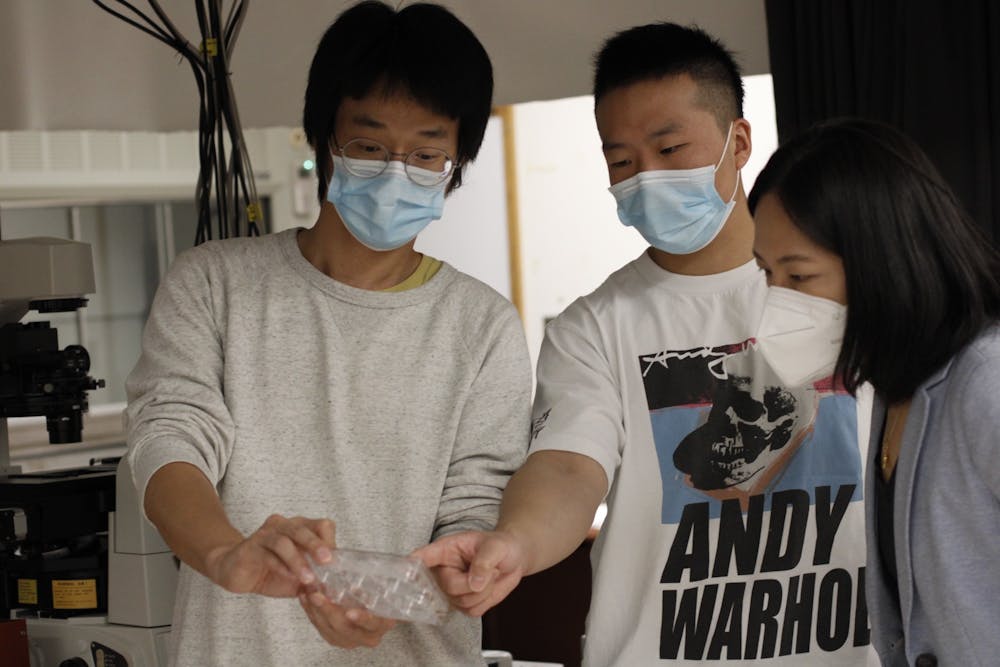IU chemists recently designed a new molecular device offering previously undetectable insights into the human body’s immune response.
The study was published Oct. 8 in Angewandte Chemie, an international chemistry journal. IU chemistry professor Yan Yu, who led the project, said the chemical probe was designed to better understand chemical processes taking place in immune cells.
When immune cells fight off an infection, they engulf the infectious pathogen and destroy it using chemical reactions. Yu said the newly designed probe can now measure these reactions with better sensitivity and resolution than previous probes.
Yu said the probe is a microscopic particle that is inserted into immune cells and reflects chemical changes by changing color. The latest probe is composed of sensors that measure two key processes immune cells use to destroy pathogens: changes in acidity and protein activity.
The team’s discovery may be used to help detect and diagnose infectious diseases, such as E. coli and tuberculosis, Yu said.
“We were definitely very excited about this,” she said. “It’s still in the very early development of the technology, but it's one step closer to making this very applicable and something we imagine in the future can be used for early diagnosis.”
The study was built off previous research in Yu’s lab that developed a similarly designed probe, she said. Yu recently filed a patent on the lab’s newest design.
Previous chemical probes have only been able to study one process at a time, but Yu said this probe’s unique design allows it to detect both simultaneously.
“No study has actually looked at how those different chemical reactions might be dependent on each other,” Yu said. “To understand how those different chemical reactions are interconnected, we have to detect multiple reactions at once. That’s what our probes are designed to do.”
Yu said researchers can track chemical reactions in real time because the probe’s sensors change colors when they detect chemical changes. The stronger the color change, the more intense the immune response.
Yu said different infectious diseases trigger different immune responses, which the probe can study to assist in disease diagnosis. The probe can also detect what strategies infectious diseases use to evade immune responses, she said.
“Once we identify that kind of information, it would be informative for the research community to come up with a treatment,” Yu said.
IU chemistry graduate student and paper co-author Seonik Lee led the project’s lab work, including designing a fluorescent microscope to detect the sensor’s color changes. Lee said he spent almost 60 hours a week over two years designing the probe, troubleshooting flaws and running experiments until the design was perfected.
Lee said he hopes his design will open the door for future scientific discoveries regarding immune system response.
“By monitoring two different chemical reactions in the cells, we hope we can see something more interesting that we couldn’t see before,” Lee said. “We don’t know what kind of chemicals have correlations between each other, but if we can see these two events, we might find something very important.”
Zihan Zhang, IU chemistry graduate student and co-author of Yu’s study, helped Lee develop the probe. Zhang said their design acts as a platform that can be adjusted to be broadly applied to various diseases.
“The work in our lab is strongly related to human disease because we work with real bacteria,” Zhang said. “By performing those experiments, our results can really help the field to understand some very significant questions.”




